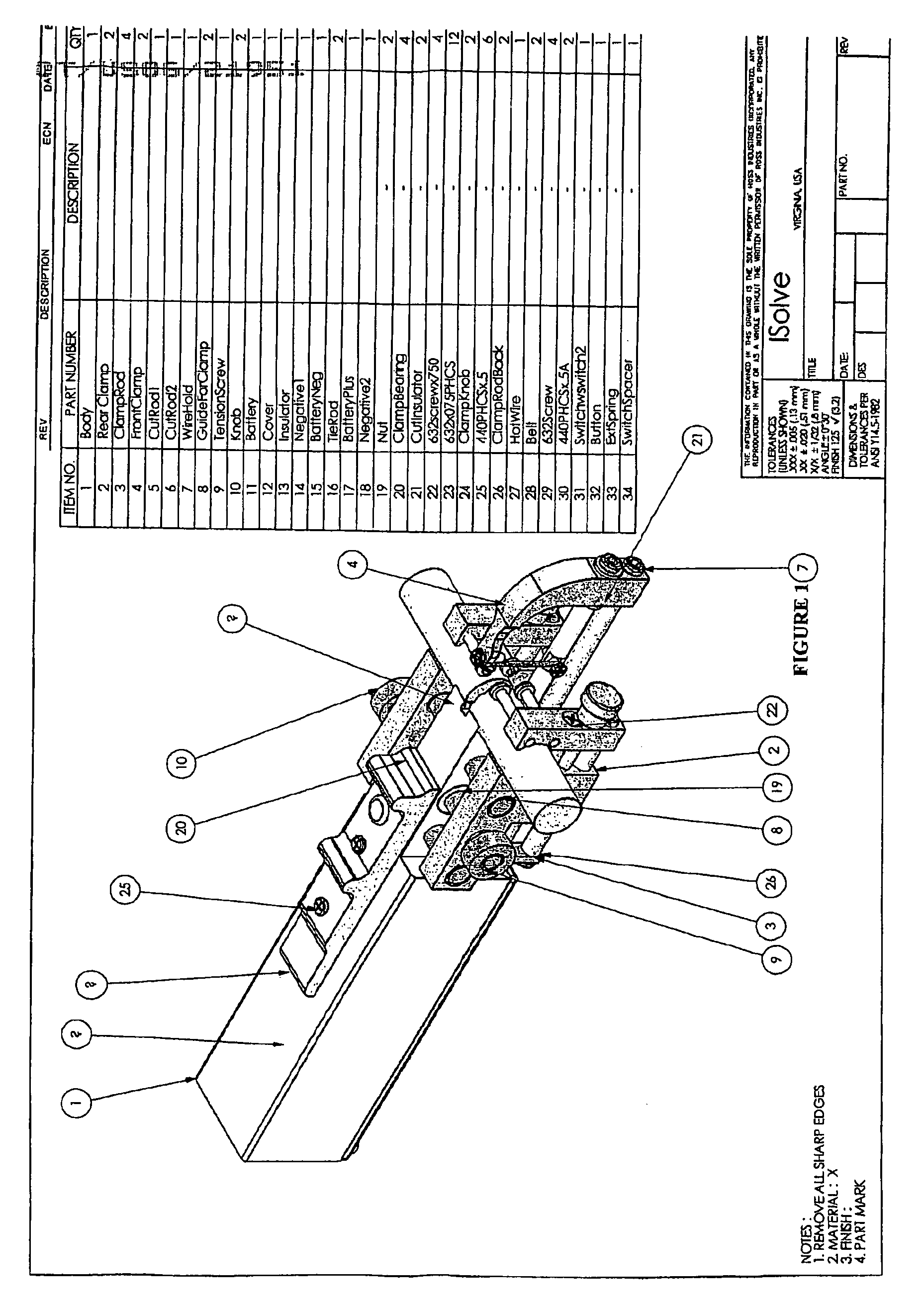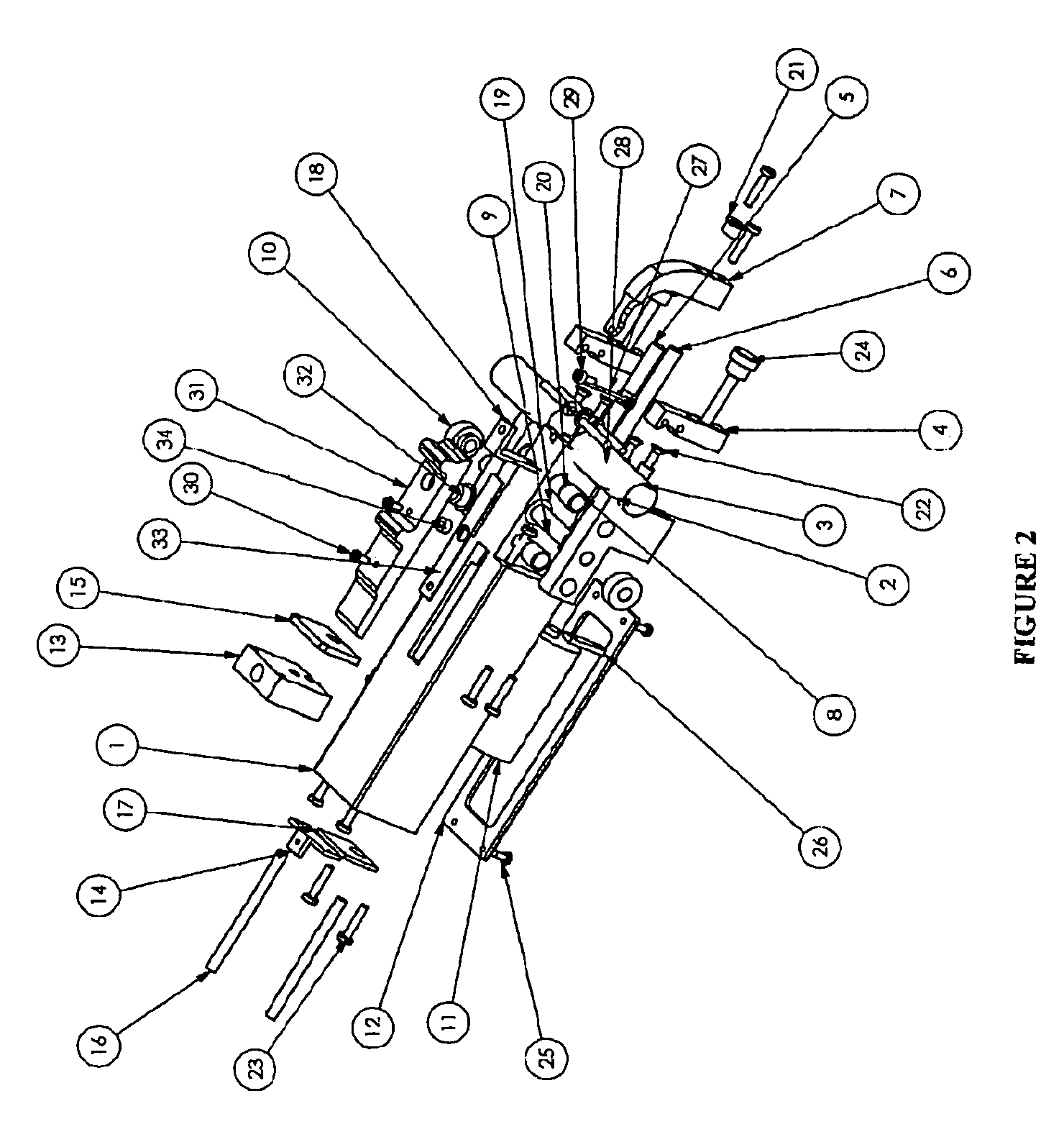Belt welding apparatus and method
a welding apparatus and belt technology, applied in the field of belt welding apparatus and method, can solve the problems of cumbersome control of small belts, cumbersome hot melt techniques, and large wand heating means, and achieve the effects of easy control of the precise area of heat application, easy control of time of exposure, and difficult control
- Summary
- Abstract
- Description
- Claims
- Application Information
AI Technical Summary
Benefits of technology
Problems solved by technology
Method used
Image
Examples
example
[0043]Using any of the described embodiments and starting with a severed conventional polyurethane belt of ½ inch diameter the belt ends are securely fastened in the device in the manner described above. Using a 0.020 inch diameter ni-chrome wire and 1.2 volt D-cell battery, the wire is slowly advanced through the interface of the free ends. The belt is welded together such that the strength of the weld exceeded the service requirements of the belt, i.e. the belt could be fully tensioned within the service range.
PUM
| Property | Measurement | Unit |
|---|---|---|
| angle | aaaaa | aaaaa |
| diameter | aaaaa | aaaaa |
| area | aaaaa | aaaaa |
Abstract
Description
Claims
Application Information
 Login to View More
Login to View More - R&D
- Intellectual Property
- Life Sciences
- Materials
- Tech Scout
- Unparalleled Data Quality
- Higher Quality Content
- 60% Fewer Hallucinations
Browse by: Latest US Patents, China's latest patents, Technical Efficacy Thesaurus, Application Domain, Technology Topic, Popular Technical Reports.
© 2025 PatSnap. All rights reserved.Legal|Privacy policy|Modern Slavery Act Transparency Statement|Sitemap|About US| Contact US: help@patsnap.com



